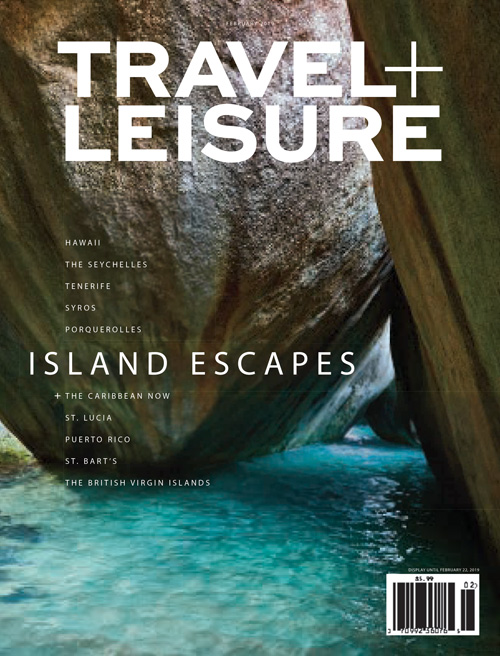|
Reviews Review of PAGLIACCI 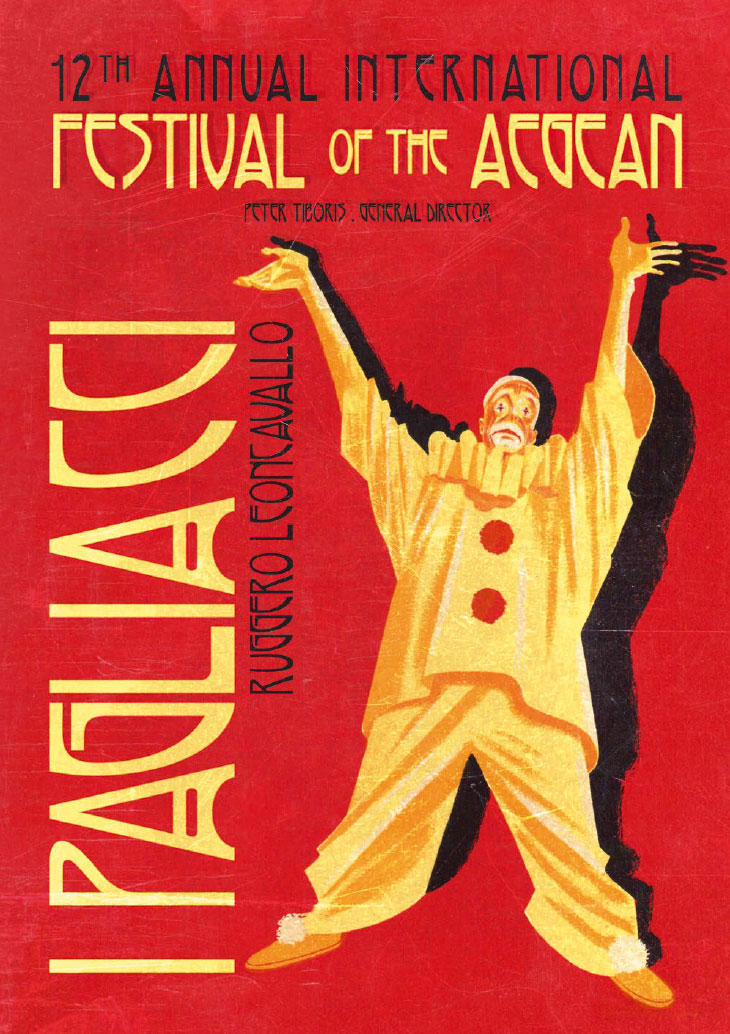 You put together a dream team and you made the 'piccolo' Scala a 'grand' scala! Canio was very experienced and sang the known arias with a voice that made people shiver. Eilana was a very dramatic Nedda with emphasis on her low register. Prolog - Tonio has a strong and sensual voice and very strong presence and was ideal for the role. And also all the other singers were great. The conductor was excellent, taking out a wonderful result. The orchestra and the choruses were very reliable. And essential was the input from Rafael Pylarinos who prepared the choruses and conducted them during the performance. Review of Festival of the Aegean
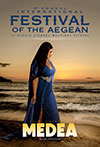 The Festival of the Aegean brings us annually to always charming Syros. Since we began attending the festival in 2005, we have witnessed exquisite programs of music attended by a loving public of residents and visitors. Founder and Artistic Director of the Festival is the Greek-American conductor Peter Tiboris. At his side is his valuable collaborator, his wife, the soprano Eilana Lappalainen. The Festival has featured famous soloists, composers, performers and artists, as well as emerging young musicians. And it is to Tiboris’ credit that in such a difficult period for Greece, he can offer a large number of quality musical events. Over the years, such international stars as John Rutter, Olympia Dukakis, Dimitris Sgouros, Keith Ikaia-Purdy, Dimitri Kavrakos and Mary-Ellen Nesi have brightened the Festival. This year the Festival opened on July 12 and ended on 24 of the same month. We watched the program on two days, 15 and 16/7. On the first night at the historic Apollo Theater we heard the Pan-European Philharmonia under the direction of Tiboris. The orchestra is based in Warsaw and consists mainly of young musicians. The program opened with Overture to Rosamunde, written as incidental music for the play by Helmina von Chézy and composed by Franz Schubert. The history of this piece is somewhat complicated: the score saw the light of day in 1890, several decades after the composer's death (1828) and included an introduction older than the one heard during the first performance of the work in 1823. In fact, the introduction came from a work the composer had composed in 1820 for an opera, Die Zauberharfe. Maestro Tiboris’ reading was imaginative. It is worth mentioning the excellent and highly expressive contribution of woodwind instruments. Immediately after we heard the Concerto for violin, cello and piano, Op. 56, known as the “Triple Concerto” of Ludwig van Beethoven. The work, created in 1803, received a vigorous interpretation. The solo parts were played by the youthful Trio 92, which has its headquarters in Vienna (Maciej Skarbek, piano, Nadja Kalmykova, violin, and Lucia Loulaki, cello). The three soloists, all enthusiastic and very capable musicians, dived into the depths of the amazing Beethoven score to bring forth all the vigor of the Allegro, volume of the Rondo alla pollaca, and the lyrical romanticism of the Largo. It's really gratifying to see young people playing with such musicality and impeccable technical precision. Maestro Tiboris, both here and in the following work, Beethoven’s Symphony No. 6, Op. 68, known as the “Pastorale” (1808), guided the orchestra with inspiration and attention. He encouraged the musicians of the orchestra to emphasize the descriptive nature of the work and to highlight the many wonderful solo passages. During the performance of the Beethoven symphony, the lighting of the room was dimmed in order to reveal the colors of the lights which were projected on stage, which were designed by Stella Kaltsou. During afternoon of the second day (16/7) of our visit, in the same wonderful theater, we heard Trio 92 again, performing an educational concert of chamber music, consisting of Haydn’s Trio No. 39, Hob. XV / 25, known as “Gypsy;” and Dvořák’s Piano Trio No. 4, Op. 90 B. 166, known as “Dumky.” In the first work, written in 1795, the three young artists revealed the essence of this bright work, especially the motivic development. I wish they will add other works by the composer in their repertoire. The School of Haydn is rarely explored by any musician, yet he was a teacher and an inexhaustible source of knowledge for many, among whom were the equally important Wolfgang Amadeus Mozart and Ludwig van Beethoven. In the second part of the concert, which followed without intermission, the Trio delivered an interpretation full of majesty and expressive certainty of Dvořák’s masterpiece. Specifically, in each of the six parts, the Trio were able to penetrate the structure and the required emotional world. The narrative-epic strength of the players (let's not forget that this is essentially six ballads or six “dumky”) illuminated the work with meaning and atmosphere. Every year since its inception, the Festival has presented a major work of the lyric operatic repertoire. We note that in previous years, the Festival has presented such popular operas as: Il barbiere di Siviglia (Gioachino Rossini), Don Giovanni (Mozart), Carmen (Georges Bizet), La traviata (Giuseppe Verdi), Salome (Richard Strauss), Così fan tutte (Mozart), and Rigoletto (Verdi). The same evening (16/7) we watched Medea by Luigi Cherubini. The Italian Cherubini (1760-1842) is one of the most important composers of opera, religious music and chamber music. His contemporary Beethoven (1770-1827), argued that he was the greatest composer of the age. Having already composed a large number of projects intended for the stage, Cherubini probably completed in 1797 his most famous work: the opera "Medea” (Medée), to a libretto by François-Benoît Hoffmann, based on the tragedy by Euripides and Pierre Corneille. The world premiere was given on March 13, 1797, in Paris (Théâtre Feydeau). Initially, the public reaction was not very enthusiastic; however, when the opera was translated from the French to the Italian, it was soon recognized as one of the masterpieces of world operatic repertoire. The premiere of the abridged Italian version took place in Vienna in 1809. After the death of Cherubini, there were new treatments: in 1855 the German version of Franz Lachner; 1865 the first presentation in London on June 6, adding recitative written by Luigi Arditi; and in 1909 the Italian premiere at La Scala of the Italian translation of the version of Lachner, curated by Carlo Zangari. During the twentieth century, the most famous production (Italian version of the score, 1909), presented in 1953, in Florence, starred Maria Callas and conductor Vittorio Gui.
The legend is familiar. The action takes place in Corinth. During the first act, the Greek princess, Glauce, daughter of King Creonte is planning to marry Giasone, leader of the Argonauts, who with the support of Medea, the princess of Colchis, managed to steal the Golden Fleece. Medea had left her homeland behind and gave birth to two children with Giasone. In the opera, Giasone has abandoned Medea and the children in order to marry Giasone. When he refuses to return to Medea, Medea decides to seek revenge. In the second act Creonte commands Medea to leave town. Medea asks to stay in Corinth with her children for one more day and has Neris take two gifts to Glauce: a crown and a mantle. During the third and last act, Medea embraces her children. Plaintive voices are heard within the palace, and we soon learn that Glauce has been poisoned by the gifts of Medea. The people are angry. Medea, Neris and the children are hidden in the temple. Soon Giasone learns the truth. Surprised and unable to intervene, he faces Medea who is holding a knife full of blood. She has killed her two children. The temple and palace are wrapped in flames. Review of Festival of the Aegean
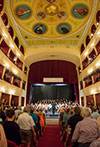 The island of Syros is a very important destination for music lovers. The center for many performances is the “Apollo” Theater in Hermoupolis. It opened in 1864 and it is a small exotic treasure in the world of opera, as is the “Angela Peralta” Theater in Mazatlan, Mexico or the Manoel Theater in Malta. Since 2005, it has been the home of the Festival of the Aegean, which is organized by the Greek-American conductor Peter Tiboris with his wife, soprano Eilana Lappalainen, and is focused on opera. The auditorium, of approximately 350 seats, has beautiful acoustics and, of course, does not need very big voices. This year’s big production of the Festival was Medea by Cherubini, but we managed to be there for the second week’s performances only. On Tuesday, July 21, the evening started with a recital of German Song given by the young artists of the Greek Opera Studio, the educational part of the Festival. Thirteen young singers interpreted 14 songs by Schubert, Schumann and Mahler, while on the piano, the lecturer of the Vienna Hochschule, Pantelis Polychronidis, coached and accompanied them. His role was obvious in the stylistic unity and correctness of the interpretations, while on the piano, he accompanied very carefully and with great sensitivity. The small size of the theater allowed for all the voices to sound clean, clear and beautifully articulated. On the second half, we watched “Mediterra” a performance of music from the Mediterranean by the ZZ Trio: Soprano Myrsini Margariti, flutist Natalia Gerakis, and pianist Zoe Zeniodi, three really exceptional musicians. We heard some famous songs, but also others that deserve to be heard more, such as “Corsica” by the contemporary songwriter Petru Guelfucci, or the traditional Turkish a cappella song “Yagmur yagar tas üstüne,” freely interpreted as a song of a girl who sings about love while watching the rain. From the pieces for flute and piano, we should single out “Memories” and “Hard Day” by Abdalla El-Masri (b. 1962), inspired by the civil war in Lebanon. We also heard a two-part program on Wednesday, 22 July 2015. During the first half, soprano Lydia Zervanos interpreted songs by Manolis Kalomiris, Theodoros Spathis, Georgios Labelet, and Theofrastos Sakellaridis. Watching Lydia, we were reminded of her mother and teacher, Martha Arapi, who had sung in the Olympia Theater. The similarities include the vocal technique and control, the complete expression and stage presence, and the light conservatory-type interpretation, that totally fit songs like “Lagiarni” (c.1925) by Spathis, a short scene inspired by the pastoral life. The singer interpreted the very demanding and complex vocal writing with a phenomenal technique and grand rhetoric–the total opposite of the very beautiful approach by Myrsini Margariti, who, during the previous evening, had sung the lullaby from Smyrna by Kalomiris, with a simplicity of a folk-like inspiration. The soprano Marilena Striftobola interpreted two songs by Spyros Samaras, “Spring” and “I love you,” and one by Sakellaridis, with a wonderful diction, drawing kudos from the audience. Pantelis Polychronidis was on the piano. During the second half, the artists of the Greek Opera Studio, took part in the semi-staged one-act opera “Suor Angelica” (New York, 1918), by Giacomo Puccini, a unique drama that takes place in a convent. The artistic direction was by Eilana Lappalainen, the music direction was by Zoe Zeniodi, and the pianist was Graham Cox. Kathryn Wieckhorst as Suor Angelica and Fotini Athanasaki as a princess gave a great dramatic intensity to the conflict between the two women. The most important advantage though was the presence of so many and so perfectly tuned and balanced voices, so that the hearing result was honestly angelic. On Thursday, July 23, Christos Papageorgiou on the piano, on stage, and Theodoros Kerkezos on the saxophone, backstage, greeted us with Ave Maria by Gounod, and then continued with works by: Errikos Vaios, Astor Piazzolla, Gershwin, Manos Hadjidakis, and Christos Papageorgiou: Tango, and three of the “Stylistic Variations on a song by Mikis Theodorakis” for solo piano. The playing by the pianist highlighted the Iberian roots of the impressionistic “Piece en forma de Habanera” by Ravel, while the perfect technique of both was fully shown in “Scaramouche” by Darius Milhaud and in “Czardas” by the Spanish Pedro Iturralde. The Festival though remains focused on opera and on Friday, July 24, it closed with the Gala by the Greek Opera Studio. The Gala included a semi-staged performance with arias and scenes from famous operas by Mozart, Offenbach and others, but also rarer pieces such as Hindemith’s “Hin und Zurück” (Baden Baden, 1927). The pacing of the performance was good and the interpretations of a generally good level. In the interest of saving time here, let us mention the “Mad Scene” from Lucia di Lammermoor which was well interpreted and well-paced by the Australian soprano Jessica Boyd, the beautiful Mozartean song sung by the Belgian Lisa Meyvis, the easy and comfortable voice of the German baritone Andreas Post, and the boyish Cherubino by the extremely young Christina Tsourounaki. Until we return to the Festival of the Aegean in 2016, summer in Syros continues with classical music, “eikastika” art, and other events. Review of the 9th Annual Festival of the Aegean 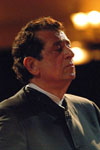 Syros is one of the most beautiful islands of the Aegean, with hospitable people, who are always willing to inform about every historical detail of the place. Since 2005 the island has hosted the Festival of the Aegean. The organizer and artistic director of the festival is Peter Tiboris, a conductor of Greek origins, a resident of America and the organizer of many concerts held both in America (mainly in Carnegie Hall in New York) and in Greece. We had the opportunity to witness in recent years several of the events of the festival and were really impressed by the variety, the large number of events and participants from different countries, the good organization, the enthusiasm and zeal brought to each event. This year we witnessed three of the events in Apollo Theatre. Specifically, on 8 /7, we watched the Messa da Requiem of Verdi. The concert was dedicated to the memory of the composer's birth two hundred years ago. I must underline that the Festival of the Aegean always includes great works of world's repertoire. For this performance, embers of five choirs (Edmond Community Chorale, Southwestern College Concert Choir, Salem College Choir, Randolph College Chorale and Choir of the Municipality of Athens), on the stage of the theatre and in the side boxes, created an overall soundstage during the performance. Under the sensitive guidance of Tiboris, the choirs , soloists (Eilana Lappalainen, soprano, Elena Chavdarova-Isa, mezzo-soprano, Keith Ikaia-Purdy, tenor, and Dimitris Kavrakos, bass) as well as the Pazardzhik Symphony Orchestra rendered the immortal Verdi work with due pomp and spirituality. The very next night (9/7) was the performance of the opera Così fan tutte, KV588, of Wolfgang Amadeus Mozart. The emotional contrasts and shades of the play were a real challenge for the singers and the conductor, who responded satisfactory. The dramatic role of Dorabella, delivered by Mary-Ellen Nesi, was a globally integrated portrait of the heroine, in a style appropriate to Mozart's time. Her voice was heard sounding well grounded. Ricardo Mirabelli and Randal Turner shouldered, respectively, the roles of Ferrando and Guglielmo, with good taste and great musicality. Randal Turner, especially, impressed us with the careful and meaningful formation of phrases. The charismatic Taryn Knerr offered a charming, dramatic and saucy Despina. Nick Karagiaouris performed the role of Don Alfonso with good theatrical sense. The direction of conductor Grigor Palikarov was consistent, and the members of the choir sang with zest and seemed to enjoy every moment. The director Dirk Schattner moved the singers theatrically and handled the space well, trying to highlight the emotional world of the heroes, emphasizing the youthfulness of the characters and attempting to highlight that the whole affair was nothing but a game. The simple sets and costumes emphasized the whole directorial standpoint. Moving on 10/7, we heard a concert from the Symphony Orchestra of Pazardzhik, under Tiboris, dedicated to three great classics by Franz Joseph Haydn, Wolfgang Amadeus Mozart and Ludwig van Beethoven entitled "Three Viennese masters.") In Overture to Fidelio, Op. 72, and Symphony No. 3, Op. 55 ("Eroica"), the conductor demonstrated his love and understanding to the immortal spirit of the composer, forming phrases with inspiration, supremacy and dynamism. During the "Eroica," the large movement were built meaningfully and with substantial volume. The soloist of the evening was Mina Polychronou, who was invited to perform two demanding concert arias by Haydn and Mozart. Polychronou sang with exemplary musicianship and great expressive power. More specifically, in the Haydn, she sang skilfully through the various musical traps and the beastly tessitura, which leads the voice to the very end. She was equally successful in the performance of the aria by Mozart, which she sang with warmth and appropriately coloured operatic drama. In this performance, her accompanist performing the piano obbligato was the valuable Jenia Manousaki. A gifted artist Manousaki, carved the phrases with style, sensibility, and sound clarity, and was in harmony with Polychronou and the orchestra. Tiboris, enjoying the quality of the ladies' performance, offered his best. |
|
Review of the 8th Annual Festival of the Aegean 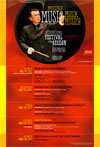 In spite of the difficult circumstances in the summer of 2012, musical culture managed to maintain its voice. The 8th International Festival of the Aegean took place from July 8-22, in the historic city of Hermoupolis at the Apollo Theater, presenting us with a variety of artistic spectacles and affirming the industrious power of creative thinking and collective effort. During the three days that we chose to visit the Festival, there was musical excitement. Because our speedboat arrived later than expected (on July 13), we could only attend the second half of a concert in which the Albanian Symphony Orchestra, directed by the American-Greek conductor and Festival mentor Peter Tiboris, performed Beethoven's Seventh Symphony with courageous tempi choices and great musicological insight. During the first half of the concert, the New Zealand Chamber Soloists (Lara Hall, violin; James Tennant, cello; Katherine Austin, piano) had just made their Festival debut performing the Triple Concerto of the German composer [Beethoven]. Luckily, we had the opportunity to enjoy seeing the New Zealand musicians perform an interesting and touching program during an afternoon concert on the following day. Their fluent performance of Mozart's mature Trio in B- flat major, KW 502, was followed by Manolis Kalomiris' Sonata for Violin and Piano, one of the four chamber music works he composed, which Lara Hall and Katherine Austin prepared just for the occasion and performed with great enthusiasm on the 50th anniversary of the composer's death and in the presence of his granddaughter. The concert ended with three short compositions, "Three Island Songs," by the native Greek composer living in New Zealand, John Psathas, which were inspired by the New Zealand Trio and given their world premiere by them in Crete just a few weeks earlier. Two hours later it was time for the long-awaited Salome by Richard Strauss that was ideally set into the restricted space of the theater. A smaller ensemble of the Albanian Symphony Orchestra managed to deliver efficiently the adjusted version of the polyphonic score under the direction of the German conductor Wiktor Bockman. Well-known opera singers were cast for the main roles, starting with the Finnish soprano Eilana Lappalainen in the role of Salome, who had an impressive presence, the vocal aptitude to deliver the demanding role, and who did not avoid the "Dance of the Seven Veils" which she performed without any hint of fatigue just moments before the staggering final scene of the opera. The tenor Peter Svensson complemented her perfectly as Herod, delivering Oscar Wilde's text with great clarity; he is a great tenor for any great opera house. The performance of the Chilean mezzo-soprano Graciela Araya, who has been a musical presence in the Vienna State Opera for twelve years, as Herodias, was a lesson in respect for the text, acting, enunciation, and vocal consistency. Impressive was the vocal dexterity of the Iranian baritone Anooshah Golesorkhi, in the role of Jochanaan, who also appears with the Metropolitan Opera in New York. Even for the rather brief role of Narraboth, the Festival engaged the famous Hawaiian tenor Keith Ikaia-Purdy, who has performed many roles in Verdi operas over the past decade, while the role of Page was convincingly performed by the Russian mezzo-soprano Maria Ratkova. Among the many great performers , we should point out the baritone Dimitris Kavrakos as the First Nazarene who did justice to his role, conveying the peaceful music with gallantry. The performance of Salome was a great achievement which one could characterize as a summer fairytale. It was completed by the plain and atmospheric set, as well as the appropriate coaching, of the director Dirk Schattner from Hamburg, and the atmospheric lighting design of Jens Hübner. Review of the 8th Annual Festival of the Aegean 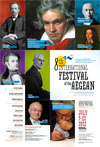 Syros is definitely one of the most beautiful islands of Greece. With its long history (its first inhabitants were the Phoenicians), geographical position, beautiful villages, and natural beauty, Syros has for years been a favorite meeting place for visitors from Greece and abroad. Ermoupolis, the capital of all the Cyclades, is itself a marvel of architecture (the great Ernst Ziller was the architect of City Hall), aesthetics, and exemplary hospitality. This island has become the site of a festival, the International Festival of the Aegean, founded by the conductor Timporis Panagiotis (Peter Tiboris), who for many years has lived and worked in New York. This year the eighth festival, from 9 to 22 July, hosted an impressive number of famous artists from around the world. Specifically, with enthusiasm and passion, the Festival presented a series of events that satisfied every taste: opera (Richard Strauss' Salome ), symphonic and choral music, chamber music, piano recitals, and ballet, theater, and an opera workshop for young opera artists (Greek Opera Studio). We watched two events, which were held on15 and 16 July. The first day, with a backdrop of the imposing town hall in Miaoulis Square, a great choral concert, titled " Under the Stars" was held. The Orchestra of the Tirana Opera and the Festival of the Aegean choir (composed of seventeen choruses and about three hundred fifty members), headed by three conductors, performed a variety of works. The concert opened with an overture by Nikola Zoragi. Then, Albanian dances byThoma Gaqi were led by the conductor Zhani Ciko who elicited enthusiasm from the orchestra and stressed the intense rhythmic and dance elements of the songs. Then, the award-winning British composer of choral music, conductor John Rutter, led his own Magnificat, composed in 1990. With great sensitivity and rhythm, Rutter encouraged the multifaceted chorus and orchestra to illuminate the exotic elements of the score: its rhythmic and harmonic influences from jazz, the American musical style, and of course the characteristic polyrhythmic lines, which are based on Latin American music. However, the open space and not very good sound system, which should have been conducive to enhancing the performance, lost several important details of the score, especially as related to choral parts and the orchestration. The iconic Bolero by Maurice Ravel followed, choreographed bythe artistic director of the ballet at the Greek National Opera (GNO), Renato Zanella. Behind the orchestra, on the stairs of City Hall, he mounted a small stage on which the great Maria Kousouni (principal ballet dancer at GNO), with supple, expressive movements, revealed the immortal music by the important French composer and the imaginative choreography by Zanella. Tiboris conducted the orchestra with care and meaning. The evening ended with the last part, Presto, Allegro molto Assai, from Symphony No. 9, Op. 125, by Ludwig van Beethoven. Under the direction of Tiboris , the soloists (Erica Muller, soprano, Maria Ratkova, mezzo soprano, Keith Ikaia-Purdy, tenor, Dimitri Kavralkos, bass), chorus, and orchestra gave their best to perform the magnificently universal music by Beethoven and momentous and touching lyrics of "Ode to Joy" (Ode an die Freude) of Friedrich Schiller. The next night, the elegant Apollo Theatre (which, architecturally, resembles a number of major opera houses of Italy, such as La Scala of Milan and San Carlo theater in Naples), was the site of a concert by pianist-composer Christos Papageorgiou. The artist marked his first appearance at the institution. The program was a work entitled"Stylistic Variations on a song by Mikis Theodorakis." More specifically, shaping and transforming the famous song, "At the hidden shore," Papageorgiou traveled to different stylistic worlds, various eras, and aesthetic directions. The beautiful song byTheodorakis wore different costumes, sometimes in the style of Couperin, and sometimes Bach, Mozart, Schubert, Chopin, and Stravinsky, as well as other composers. Not only were the styles of composers shown, but also the emotional character of the piece that changed accordingly, always with success. The perfect piano technique and richly imaginative fantasy by Papageorgiou won the public.
About Constantine P. Karabelas-Sgourdas Review of La Traviata and Carmina Burana 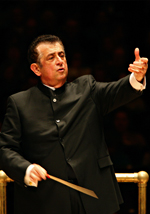 The Impact of Peter Tiboris La Traviata With the right sense for style, and with a distinctive knowledge and respect to the needs of the singing voice, Mr. Tiboris presented us with a fully dramatic, lyric and sensitive performance of Verdi’s melodrama. Under his guidance, the Pan-European Philharmonia Orchestra, the Tulsa Oratorio Chorus and the University of Georgia Opera Ensemble, rendered brilliantly their parts. The same can also be said for the majority of the soloists. More specifically, Natalia Ushakova (Traviata) sang her part with a full voice, constantly exploring the emotional world of the famous heroine. Her performance was full of emotional tension, delivering the most fragile side of Violetta’s character. Israel Lozano (Alfredo) had many good moments…. Frederick Burchinal (Giorgio Germont) was really convincing as the father of the hero, unraveling with his deep voice the worries and concerns of his character. The secondary roles were well delivered by Marissia Papalexiou (Flora Bervoix), Josephine Delledera (Annina), Joseph Brent (Gastone), Brent Davis (Barone Douphol), Benjamin Dawkins (Marchese D’Obigny) and Richard Block (Dottor Grenvil). The gifted and internationally known choreographer Renato Zanella, who has recently been appointed Ballet Director of the National Opera (Greece), was responsible for the stage direction, using smartly the small stage of the theater and setting (as were to be expect ed) in lively dancing motion both singers and chorus. The set was clean cut and the costumes elegant. Carmina Burana Mr. Tiboris led effectively the American choirs (Taghkanic Chorale, Durango Choral Society, Sardis Presbyterian Church Sanctuary Choir, The Knox Choir of Presbyterian Church, Warwick Valley Chorale, Brevard Community College, Tulsa Oratorio Chorus, Nova Voce). The Maestro managed to project the epic as well as the erotic tone of the score. The choirs performed vividly while as far as the soloists are concerned, Myrsini Margariti stood out, impressing us with her fresh voice, clean technique, tonic accuracy, and impeccable high notes in the parts “Siqua sine soclo”, “Stetit puella”, “In trutina”, and “Dulcissime”. The baritone Frederick Burchinal, who had fascinated us with his performance as Giorgio Germont on the previous evening, had many strong moments in expression… The concert was concluded with excerpts from the Suite by Mikis Theodorakis, Zorba, performed cheerfully and passionately by Mr. Tiboris and the orchestra. The excited applause of the audience in the end of the concert was well deserved.” Review of Medea's Choice  Euripides, Theodorakis, Zanella This is not the first time that the myth of Medea inspired choreographers: Jean Georges Nover in 1763 (Medea and Jason); and more recently Birgit Cullberg in 1950 with Béjart as Jason, music by Bartok and Graham with the “Abyss of soul” for four dancers and music by Barber in 1947. The same piece, scored for large orchestra was choreographed by Rallou Manou in 1958, following Euripides. Towards the end of the 80s Lia Meletopoulou created (with S. Koundouros) a solo video-dance inspired by Medea’s country of origin, the Dervishes, and the Noh theater. I am impressed by the international collaboration in this world premiere that took place in that jewel of a theater “Apollon” which is beautifully restored. There was even air conditioning! We wish there was a snack bar too ! The artists; the composer of course; the diva of the Athens Opera House Ballet Maria Kousouni-Fika; and Angeliki Sigourou choreographing the 11 strong “Akropoditi” local dance troupe. Also, The Athens Opera House Ballet star Danilo Zeka, whose origins are from Albania; plus six more dancers and artists from different countries, counting the dancers as well as those behind the scenes; obviously Renato Zanella (from the State Opera of Vienna and State Ballet of Berlin) who did the choreography and scenery and costumes; as well as the light designer who was Italian too. Myrto Belopoulou is Greek and she was responsible for the costumes. Under the guidance of Renato of course. Festival of the Aegean 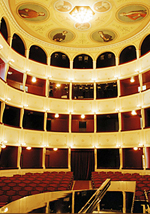 As the administrative and cultural center of the Cyclades, Syros is a rich yet modest island that hosts the textile and shipbuilding industries that serve the other islands in the archipelago. Surrounding the harbor, the lively square of Hermoupolis—which includes the neoclassical city hall, the archeological museum, and behind it the Apollo Theater—hosts festival guests every summer. The harbor has luxurious ships; their Greek owners pick this city to build their villas decorated with frescos. Even though the island is not a popular tourist destination, it has elegant architecture and a quiet atmosphere, which makes it worth including in holiday plans. The Apollo Theater was one of the first opera houses in Greece. It was built by Italians in 1864, and Rigoletto was the first opera performed on its stage. The stage is 18 meters wide and 9 meters deep, and more than 1,000 concerts and operas have been performed on it. The Apollo Theater is often called “a small copy of Milan’s La Scala” with a capacity of 400 seats. Despite the damage it received during the Second World War, the theater was in service for some time, but it was eventually left abandoned until restorations took place between 1980 and 2000. Peter Tiboris, General and Artistic Director of the International Festival of the Aegean is happy with the outcome of the festival, now in its seventh season. Tiboris has announced that Rigoletto will be performed again in the celebrations for the theater’s150th anniversary, which will take place in 2014. One of the festival’s traditions is holding a performance of one masterpiece every year, so this year there were La Traviata banners everywhere. La Traviata was the pearl of the Festival on the July 12, 14, and 16, when it was performed by the Pan-European Philharmonia Orchestra, conducted by maestro Tiboris and sung by artists from the state operas of Vienna and Greece. Rehearsals lasted a week. On top of the rehearsals, the artists participated in workshops with students all week…The highlights of the evening were soprano Natalia Ushakova from Vienna State Opera, who gave a superior performance with her impressive voice and theatrical talent as Violetta, and Frederick Burchinal as Giorgio Germont…. “I Owe All to Leyla Gencer” “After the performance, I had an opportunity to talk with Natalia Ushakova, who emphasized her admiration for Leyla Gencer. “Everyday we were only working on Violetta for four hours. Gencer was an impressive woman! She was always envied by Callas and was pressured… All the praises I am receiving are thanks to Gencer. I owe it all to Leyla Gencer!” The events did not only take place at the Apollo Theater. Sunset concerts were held in the St. Nicholas Church, which is at the peak of the island, and open air concerts were held on a platform built in front of the city hall in Hermoupolis square. On July 17, a choir and an orchestra of more than 500 artists performed Carmina Burana for a large audience. Also, every year workshops about opera and ballet are organized. “Greek Opera Studio,” held for the second year, conducted a comprehensive seminar with 15 artist-tutors, (including some artists from La Traviata), and 20 opera students… Organization was impressive; I can say the team’s work was almost flawless. Every year thousands of people visit the island to participate in the festival. Hotel reservations are made weeks in advance, and tickets are sold out quickly. There is a loyal audience of visitors who arrange their holiday plans around this festival. Even though Syros Island is not one of the heavily visited Greek islands, such as Mykonos and Santorini, Hermoupolis can be called the “cultural capital of Cyclades.”…. Irek Mukhamedov has been replaced by Renato Zanella as the head of National Greek Ballet; of Theodorakis’ Medea transformed into contemporary ballet Renato Zanella introduced ballet to the stage of the Apollo Theater. Zanella, who joined the Stuttgart Ballet as a dancer and became a choreographer a short time later, has been known since 1995 for his solo works with dancers such as Vladimir Malakhov, Manuel Legris, Roberto Bolle, Nicolas le Riche, and Polina Semionava, when he was working as a ballet director in State Opera of Vienna. Zanella, who was chosen as “choreographer of the year” for several years, was invited by Tiboris to be the dance director of the festival. Since then, he has added impressive performances of famous ballets into the festival. This year, Zanella presented an impressive staging of a contemporary ballet version of Medea. The world premiere of “Medea’s Choice” took place at the Apollo Theater on the July 23, in the presence of Theodorakis. With his magical combinations and fascinating setups, Zanella’s work has very original elements. And the six dancers who combined their technical superiority with their roles are taking Zanella’s creativity to the peak. Theodorakis talked about transforming Medea into a ballet: “Zanella adopted Euripides’ work and my Medea opera with a superior tragic element and a fascinating choreography, allowing the tragic elements within my music to be seen in the choreography.” The Greek dancer Marina Kousouni, who performed Medea, is an impressive talent with strong technique and elegant aesthetics. After working for the State Ballet of Vienna, she joined the Hamburg Ballet on the invitation of John Neumeier, and has been working as the lead dancer for the State Ballet of Greece since 2006. She said about Zanella, “It was so much fun to work with him; he is a very creative Ballet master. I am so happy he will be joining the Greek Ballet.” Zanella staged three acts between the 22nd-24th of July, and received audience’s admiration with the “Choice of Medea.” We interviewed Zanella about the Aegean Festival and his new projects. With its growing success, the Festival of the Aegean has become richer now that you are participating. I am really proud to be dance director and choreographer of the Festival of the Aegean, which I participated in upon Tiboris’ invitation. Ballet had never before been performed on the impressive stage of the Apollo Theater. Over the past few years, several pas de deux and solo performances were staged for artists from leading groups of Europe. There were workshops and rehearsals inside the historic building, which was really exciting… Recently it was announced that Irek Mukhamedov would quit working as the head of the Greek Ballet. The artists who supported you for that role are so happy right now. What are your plans for the next year? Yes, I will start to work as a dance director and choreographer for the Greek Ballet this September. I believe we will have a good season with a strong team and an impressive group of dancers. Next year the ballets Spartacus and Romeo and Juliet will be staged. With the addition of contemporary works, I believe we will have a rich and satisfying program. What kind of a method did you use to create “Medea,” which was a world premiere in this year’s festival? I set the choreography of the “Medea’s Choice” on to the Medea opera by Theodorakis. We’ve worked on it with the participation of lead dancers from Vienna, Greece, and the Berlin Ballet for nearly six months. There was no chance to work together, since they were dancing with different groups, but by having the dancers follow the videos, combined with general rehearsals, we were able to produce a complete work. Have you considered a tour this season? It would be nice to see it in Istanbul. I have worked with the State Opera and Ballet of Istanbul. I know Turkish dancers very well. I would definitely like to make a tour to Turkey if we would be invited. |



